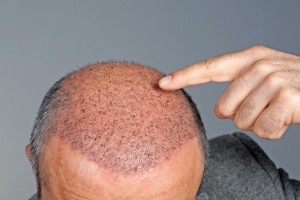
- Yes, and for Sure
- Hair transplant has been performed since 1900’s
- The 100 Years of Experience has proved that hair transplant is an effective surgical treatment for hair loss
- In 2008 there were over 250,000 cases performed globally
- That transplanted grafts can survive and last a life time is a proven scientific fact
STATISTICS OF HAIR TRANSPLANT
| Hair Loss Statistics | Data |
| Number of U.S. men experiencing hair loss | 35 Million |
| Number of U.S. women experiencing hair loss | 21 Million |
| Number of hair loss sufferers, world-wide, seeking professional treatment | 811,363 |
| Percent of men who will have noticeable hair loss by age 35 | 40% |
| Percent of men who will have noticeable hair loss by age 60 | 65% |
| Percent of men who will have noticeable hair loss by age 80 | 70% |
| Percent of women who will have noticeable hair loss by age 60 | 80% |
| Average number of hair follicles on the scalp | 110,000 |
| Average number of hairs lost daily by hair loss sufferers | 100 |
| Of the two medical treatments Minoxidil and Finasteride: | |
| Percent of male patients that use a minoxidil (such as Rogaine) | 85% |
| Percent of male patients that use a finasteride (such as Propecia) | 15% |
| Percent of all patients that had a negative reaction to any hair loss treatement | 7% |
| Percent of hair loss sufferers who would spend their life savings to regain a full head of hair | 47% |
| Percent of hair loss suffereres who said they would rather have more hair than money or friends | 60% |
| Percent of hair loss suffereres who said they would give up sex if it meant they would get their hair back | 30% |
| Surgical Hair Restoration | |
| Number of surgical hair restoration procedures in the U.S. (2010) | 101,252 |
| Number of surgical hair restoration procedures worldwide (2010) | 279,381 |
| Sugrical hair restoration worldwide revenue | $1.87 Billion |
| Under 20 Years Old | 1.40% |
| Ages 20 – 29 | 19,3 % |
| Ages 30 – 39 | 30.40% |
| Ages 40 – 49 | 26.30% |
| Ages 50 – 59 | 15.40% |
| 60 + | 7.10% |
| Non-Surgical Patient Prescription Usage | |
| Propecia | 27.50% |
| Rogain Foam | 14.80% |
| Minoxidil | 13.40% |
| Proscar or gerneric finasteride | 4.30% |
| Nizoral Shampoo | 6.10% |
| Biotin | 4.90% |
HISTORICAL EVIDENCE THAT HAIR TRANSPLANT WORKS
- 1882, Joann Dieffenbach ( Germany ) used goose quills as trephines and began the history of auto hair transplantation
- 1939, Dr Shoji Okuda ( Japan ) reported 30 successful cases of punch graft hair transplant
- 1959, Dr Norman Orentreich ( USA ) reported Donor Dominance and became the first hair transplant surgeon in western countries
- 1990, Dr Misumi Inaba ( Japan ) published his FUE technique
- 1991, Dr Bobby Limmer ( USA ) introduced the use of microscopes in graft dissection, starting the new era of Follicular Unit Hair Transplant
- 2005, Dr Jerry Wong ( Canada ) introduced Ultra-Refined Follicular Unit Transplant (UR-FUT)
SCIENTIFIC EVIDENCE THAT HAIR TRANSPLANT WORKS
2 TYPES OF SCALP HAIR
- Scientists have all agreed that the human scalp has 2 types of hairs: DHT sensitive and DHT insensitive
- DHT insensitive is not affected by the undesired DHT which induces hair miniaturization in Androgenetic Alopecia
- DHT insensitive hair lasts a lifetime and is labeled “Permanent Hair”
THE DONOR DOMINANCE PHENOMENON
- After years of research, Dr Orentriech ( USA ) in 1959 reported the principke of Donor Dominance
- Hairs when moved from one body area to another maintained their original characters (color, curl, texture and growth rate)
- This phenomenon explained why hair transplant is possible
NO REJECTION OF TRANSPLANTED HAIR
- Hair are transferred from one part of the scalp (donor site) to another (recipient site) of the same person
- No chance of rejection as only your hairs are used
DOCUMENTED EVIDENCE THAT HAIR TRANSPLANT WORKS
BEFORE & AFTER PICTURES OF PATIENTS
- Thousands of patients’ photos can be found online in hair transplant centers website
- The result before and after hair transplant is obvious
MEDICAL PUBLICATION
- Medical textbooks, medical journals, and scientific papers had been published since 1930’s
APPROVED BY THE MEDICAL PROFESSION
PATIENTS BECOMES SURGEONS
- Many doctors suffered hair loss and asked for hair transplant
- After having a hair transplant some were so impressed by the result that they changed their career and became hair transplant surgeons
MEDICAL ORGANIZATIONS
- There are at least 16 hair transplant medical societies all over the world.
- Open examinations are prepared to assess the competency of hair transplant surgeons
ACCEPTED BY CELEBRITIES AND GENERAL PUBLIC
- Since 1959, hair transplant has evolved into one of the fastest growing and most well respected aesthetic surgical subspecialties
- This procedure has attracted the attention of the celebrities and general public’s.
- In 2008 over 260,000 cases were performed worldwide
- The followings openly admitted about their hair transplant
- American baseball hall of famer Wade Boggs
- Former Major League Baseball player, Joe Niekro
- British celebrity, Shaun Williamson
- UK rock star, Francis Rossi
- Prime Minister of Italy, Silvio Berlusconi
- Brirish Soccer Player, Wayne Rooney Brendan frayser, Sylvester stallone
Summary
Reviewer
Chaitanya Sing
Review Date
Reviewed Item
DOES HAIR TRANSPLANT REALLY WORK?
Author Rating





